One of the most common types of browser hijackers are actually sites that use various deceptive and misleading techniques to gain important permissions in your browser, such as the permission to show notifications or to redirect you. A recent example of such a hijacker site is Mmrtb. It functions similarly to other such sites I’ve covered here, including Mergeconnection.co.in and Maxfirewall.co.in, so I already have some idea of what to expect from it.
From its very name, I can already tell that this site is probably sketchy and not something you should be visiting, let alone giving permissions to. However, through sneaky use of pop-up prompts or installers of certain free apps, Mmrtb.com can find its way into people’s browsers and once it’s there, spam them with random, potentially unsafe content.

If this hijacker site is bothering you right now, it’s probably a good idea to scan your system for malware, for which I recommend using SpyHunter 5 – a professional anti-malware tool linked on this page that can also rid your browser of Mmrtb. But if you prefer to deal with this hijacker manually, that’s also perfectly doable and the way to do it will be explained next.
Mmrtb Removal Steps
Browser hijacker sites like Mmrtb are sometimes easier to deal with than you may think. That’s why we’ll start with some simpler steps first and move on to the more advanced solutions only if these don’t work:
- Open up your browser and head to the settings menu—it’s usually tucked away under three dots or lines in the top-right corner.
- From there, look for the Extensions or Add-ons section. This is where all the little extras you’ve installed live, and chances are, something in here doesn’t belong.
- Take a good look. If you spot anything sketchy – something you don’t remember installing or something that just doesn’t sit right – remove it immediately.
- Next, navigate to Privacy & Security settings and check Site Permissions. Specifically, look for notification and pop-up permissions.
- If you see any unknown or suspicious websites listed – especially anything linked to Mmrtb – revoke their access without hesitation.
Once you’ve done this quick cleanup, restart your computer. Open your browser again and see if the issue is gone. If Mmrtb is still lurking, don’t panic—there are more tools in the arsenal.
SUMMARY:
The removal guide below isn’t super complex but inexperienced users may still find some of the steps a bit confusing. If, at any point in the guide, you feel like it’s getting overwhelming, know that you can always opt for using SpyHunter 5, which can take care of Mmrtb for you and also get rid of any malware that may have entered your system through this rogue site.
How to Remove Mmrtb From Your Browser
In cases where rogue sites like Mmrtb.com don’t go away after performing the quick steps I showed you above, the most likely reason for that is the introduction of a rogue policy into the browser.
Click the menu of your browser or visit its Settings page and if you see a note that reads “Managed by your organization”, this clearly indicates that such a policy is present and you need to deal with it.

To check if this is the case, open a new browser tab and type one of the following into the address bar:
- Chrome:
chrome://policy - Edge:
edge://policy - Brave:
brave://policy
If you’re using another Chromium-based browser, just replace the browser name in the URL.
This will pull up a list of active policies. Pay attention to the Values column. Some entries there will look harmless, but others might be long, gibberish-looking strings. Those are the ones you need to focus on. Copy anything that looks suspicious into a text file—you’ll need it later.
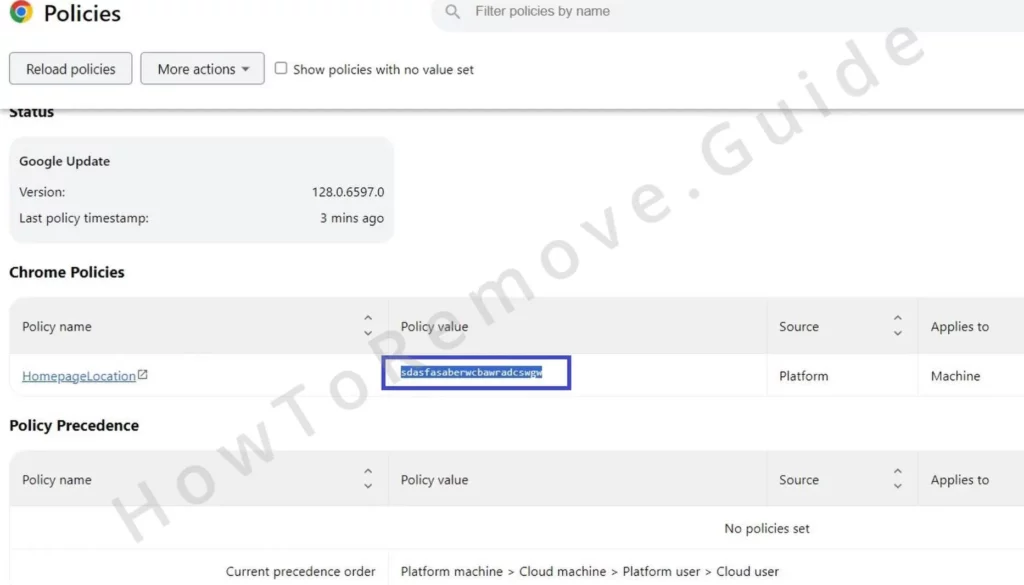
Now, go back to the Extensions page and enable Developer Mode (usually a toggle in the top-right corner). This will display extension IDs, which might help you spot any rogue add-ons. If you see any suspicious extensions, copy their IDs to your notes.
Can’t access the Extensions page? That’s a red flag. Mmrtb might have restricted your access, but don’t worry – I have a way around it.
If you are a Google Chrome user, open File Explorer and go to: C:\Users\[Your Username]\AppData\Local\Google\Chrome\User Data\Default\Extensions
Delete everything in that folder.

Here are the Extensions folder locations for some other popular browsers:

This forces Chrome (or your browser of choice) to reset its extensions, hopefully unlocking the page so you can investigate further. You should now be able to find and copy the IDs of any rogue extensions.
Video walkthrough for this step:
Delete Mmrtb.com Policies
The previous steps provided you with some important data (values, IDs) that you must now use to search for rogue Mmrtb.com entire in the System Registry and delete anything you may find. Here’s how to do that:
- Press Win + R, type
regedit, and hit Enter to open the Registry Editor. - Press Ctrl + F to open the search function.
- Search for the policy values or extension IDs you saved earlier. If you find a match, delete it.
- Always run an additional search after each deletion to see if there are more related items.
What If You Can’t Delete a Registry Key?
Sometimes, Windows doesn’t let you remove certain registry entries, throwing up “Access Denied” errors. Here’s how to fix that:
- Right-click the registry key and select Permissions.
- Click Advanced, then select Change next to the owner field.
- Set the new owner to Everyone, and click OK.
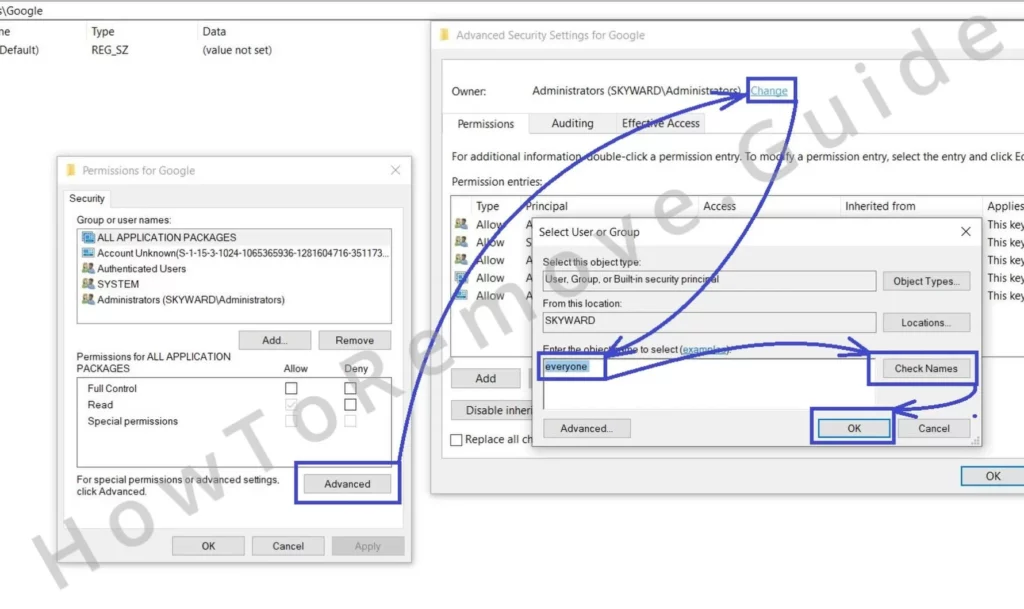
- In the previous window, check both Replace options, then click Apply and OK.
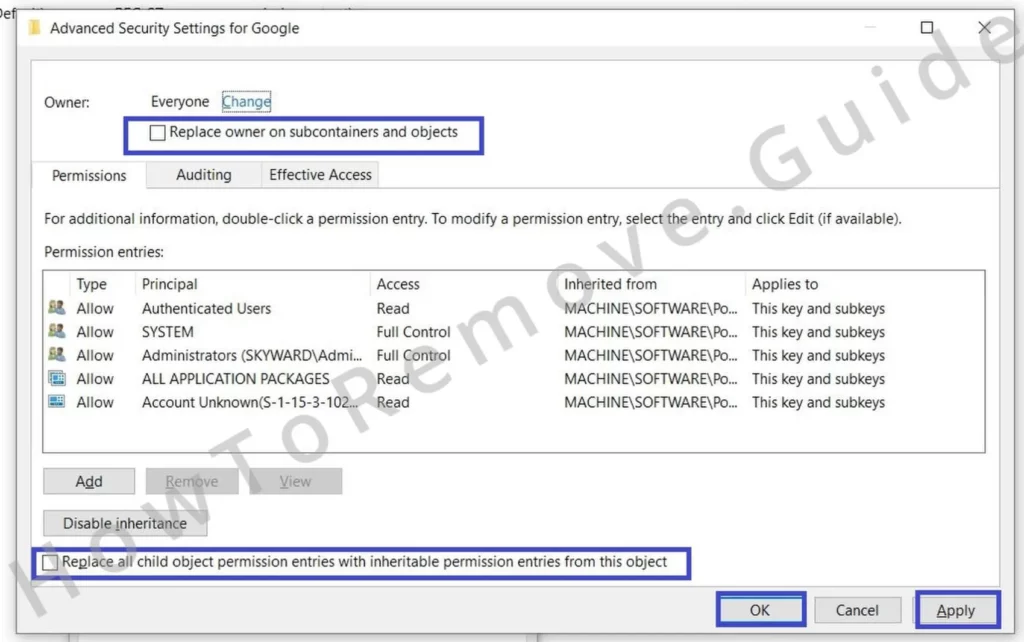
Now, you should be able to delete the key without any issues.
Once you’ve cleaned everything up, run another search to make sure nothing is left behind. It might take some time, but trust me—it’s worth it.
Video walkthrough for this step:
Alternative Ways to Get Rid of Mmrtb.com Browser Policies
If you’ve gone through the Registry Editor and Mmrtb.com is still clinging on, don’t give up just yet. There are a few more tricks to try.
Using the Group Policy Editor
If you’re on Windows Pro or Enterprise, you have access to the Group Policy Editor, which gives you another way to clean things up:
- Press Win + R, type
gpedit.msc, and hit Enter. - Navigate to Computer Configuration > Administrative Templates.

- Right-click it, choose Add/Remove Templates, and remove everything.
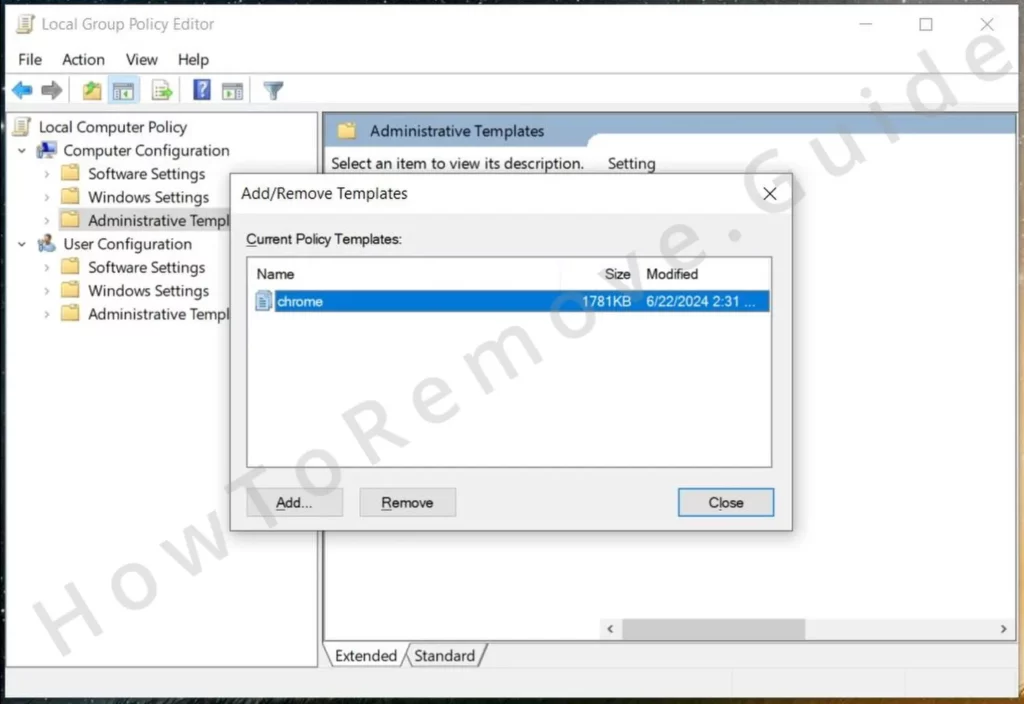
Most people don’t use this feature, so clearing it out won’t cause any issues.
Chrome Policy Remover Tool
If you’re a Chrome user, you’re in luck—there’s a free tool that can automate this process for you.
- Download the free Chrome Policy Remover tool.
- Run it as Administrator.
- Let it automatically run a policy deletion script. Once it’s finished, all Chrome policies will be gone.
Ignore any warnings about an “unknown publisher” – this tool is legitimate and safe to use.
Video walkthrough for this step:
Manual Group Policy Removal
Automatic Group Policy Removal
Remove Mmrtb From Chrome, Opera GX, Edge, and other Browsers
At this point, the Mmrtb policies should be gone from your browser which allows you to go back to your browser’s settings and revoke any changes that the hijacker has made. Here are the areas you must focus on:
- Check your Extensions page again – If anything suspicious is still hanging around, remove it.
- Clear your browsing data – Go to Privacy & Security settings and delete your cache, cookies, site data, and everything else except your passwords. Choose All Time for the best results.
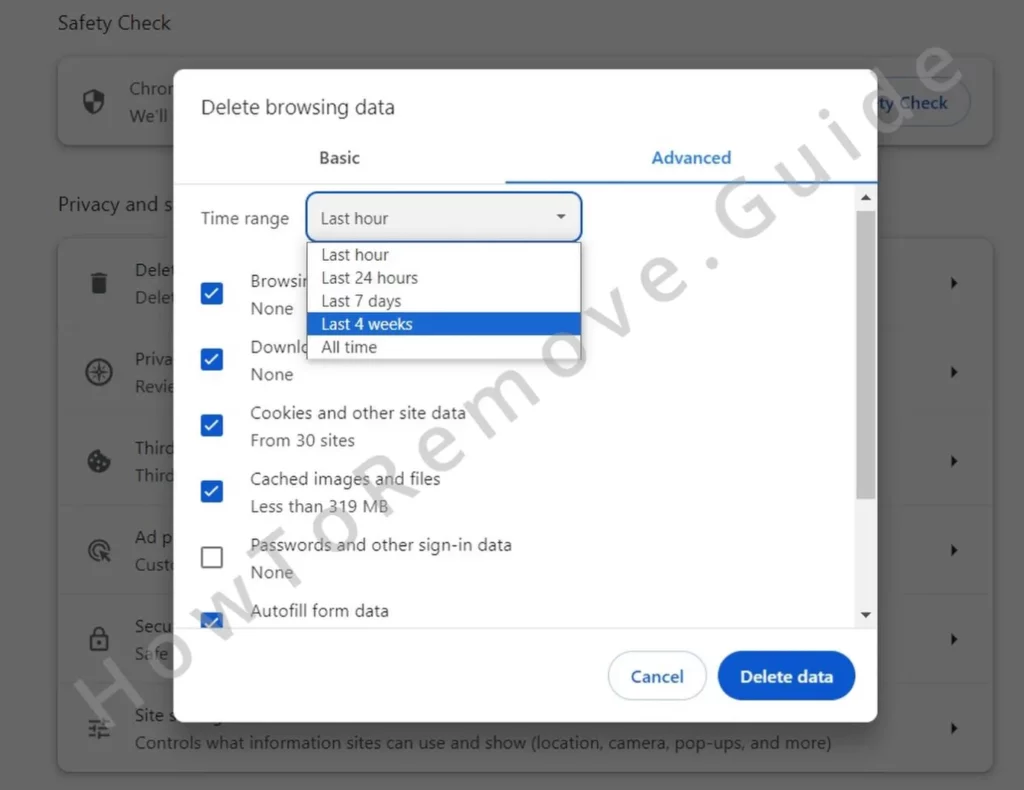
- Double-check site permissions – Some permissions might have been altered. Manually review all of them and revoke access for Mmrtb.com or anything else suspicious.
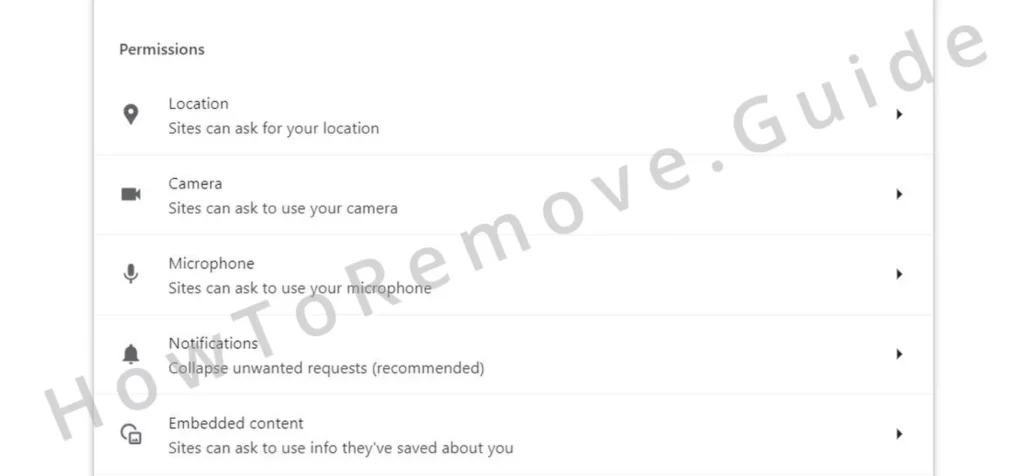
- Reset your homepage & search engine – Scammers love to swap these out for their own shady versions. Make sure everything is back to a trusted search provider.
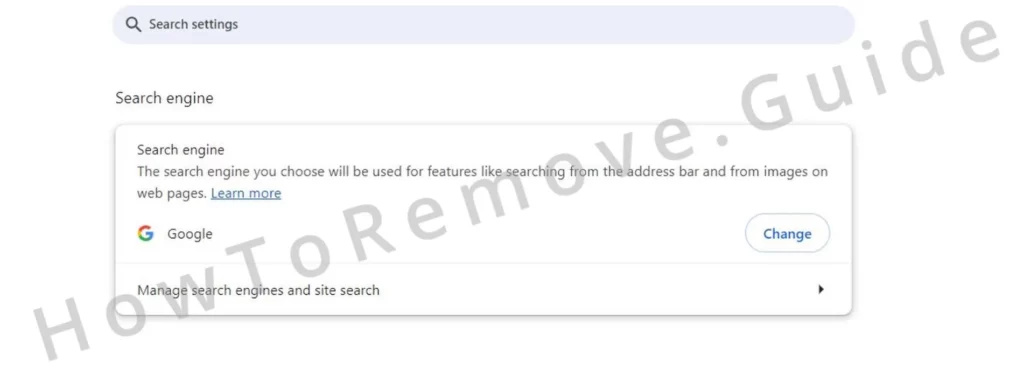
After these steps, your browser should feel brand new.
Video walkthrough for this step:
Chrome
Microsoft Edge
Mozilla Firefox
If All Else Fails: Bring in the Big Guns
Sometimes, no matter how thorough you are, a hijacker like Mmrtb just won’t go away. That’s when you need some extra muscle.
SpyHunter 5 is a solid malware removal tool that can scan your system for anything you might have missed.
- Download and install SpyHunter 5.
- Run a full system scan.
- Let it detect and remove any lingering threats.
Malware scanners catch things that manual methods might miss, so running one after all these steps isn’t a bad idea.
How to Stay Safe Moving Forward
Now that Mmrtb is gone, let’s make sure it never comes back.
- Be careful where you download things. Sketchy websites = sketchy software.
- Never click on random pop-ups. Those “Your computer is infected!” messages? Lies.
- Watch out for fake CAPTCHAs. Scammers love tricking people into allowing notifications.
- Regularly review your browser extensions. If you don’t remember installing it, delete it.
Oh, and keep your antivirus updated. Most modern security tools can block threats before they even reach you.
Final Thoughts: You’re in Control Now
Mmrtb might have been a pain, but now you know how to fight back. You’ve got the knowledge, the tools, and the confidence to keep your browser clean.
Start with the easy steps. If that doesn’t work, dig deeper. And if things get really bad, bring in a malware scanner.
Stay vigilant, keep your defenses up, and you’ll be one step ahead of these scammers. Your browser—and your sanity—will thank you.

Leave a Reply